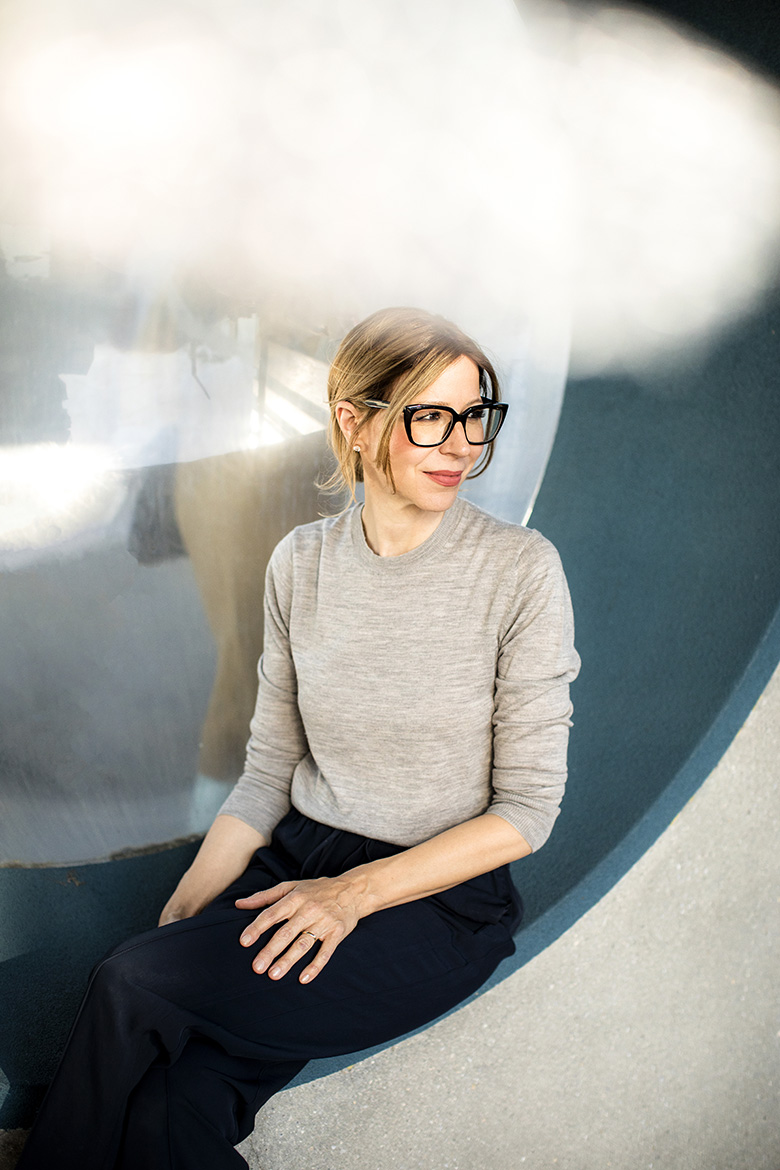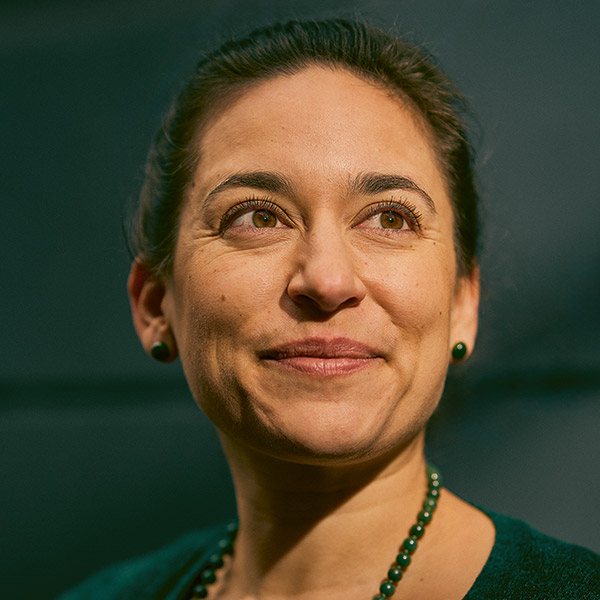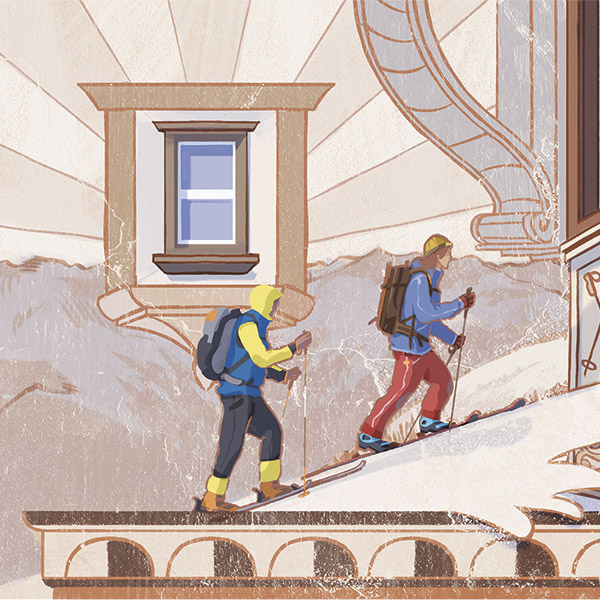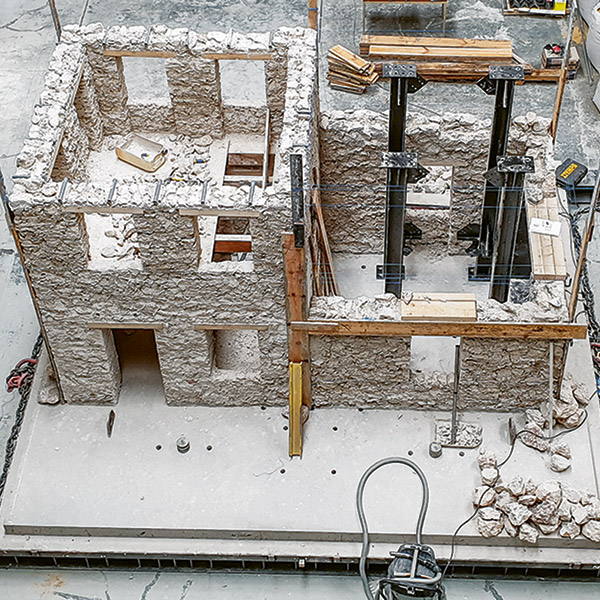Interview
All is design
Claudia Mareis was born in Valais and trained as a graphic designer. Today, she’s researching into the political dimensions of design in Berlin. She’s shaping an interdisciplinary field of research that aims to bring about a fundamental change to the production of knowledge.

The struggle for the best ideas is also a social survival strategy, believes the design researcher Claudia Mareis. Her ideas are changing how we view design. | Image: Kostas Maros / 13Photo
When we hear the word ‘design’, we usually think of shapes and colours, maybe of specific chairs, lamps or appliances in the area of product design. Perhaps even architecture comes to mind. But the projects and publications of Claudia Mareis open up a completely different field. She is concerned with ‘governance through design’, with so-called active material, techniques of creativity and knowledge cultures. How does all this fit together? There are two traditions of thought, says Mareis when we meet around a conference table in the luminous campus of the Basel Academy of Art and Design FHNW.
One has a concrete understanding of design; the other encompasses an expanded concept of design that emerged in the 1950s and ’60s, especially in Germany, the UK and the USA. “This tradition understands the planning and shaping of our entire living environment as ‘design’”, she says. “The crucial questions here are about who designs our everyday lives, and what form it takes”.
Mareis feels at home in both traditions. She trained as a graphic designer in Biel in the late 1990s. Back then, that meant doing an apprenticeship at a college of arts and crafts. Her first engagements took her to agencies in Amsterdam and Berlin. Just before she turned 30, she went back to college. The new Zurich University of the Arts (ZHdK) was offering a curriculum that went beyond a commercial understanding of design.
During her training at the college of arts and crafts – and during her work as a graphic designer, too – what she missed was a theoretical approach to design. “I was always wondering how cities could be so ugly”, she says, adding that it’s an especially obvious problem in the canton of Valais, where she grew up. “Design is a deeply political topic”, she says. When you’re designing spaces, machines or even computer systems, the key issue is always who gets to make decisions. And it’s equally important to flip the question round and ask who’s being excluded from the decision-making.
What’s more, she says: while designers possess a great deal of expertise, they often have trouble talking about their own methods. “I didn’t realise that enough at the time”, she says, and laughs as she adjusts her glasses. She went on an Erasmus programme to study at the Institute for Cultural Studies at Humboldt University in Berlin. In 2021, a chair was established for her there.
Her exchange semester in Berlin enabled her to engage with issues of interest to her by applying methodologies adopted from cultural studies. “That was a great combination for me”, she says. Design theory looks for solutions, it’s pragmatic, and sometimes a bit unreflective. The humanities, on the other hand, deal in doubt; they problematise things and pose critical questions in a historical context. Thanks to a collaboration between ZHdK and the University of Linz, Mareis was able to do a doctorate at the former institution. She wrote her thesis on the expanded concept of design since the 1960s, and it was the first such thesis on this topic in Switzerland.
Creativity as a survival strategy
This expansion of the concept of design in the 1950s and ’60s was heavily influenced by the war years, and by the post-war period and the advent of the computer, says Mareis. Different disciplines began to combine their respective methodologies – from the social sciences to the philosophy of science, physics and cybernetics – in order to focus on specific problems. “Design fitted in well in this context”, says Mareis, “because it was an open discipline”. The Design Methods Movement then emerged in the Anglo-American world. In a general sense, every planned change began to be understood as ‘design’.
Mareis has a particular interest in creativity techniques – such as brainstorming, which was used by those in charge during the Second World War. It was afterwards applied in science, business, politics and many other fields. Guidelines were drawn up on how to train brainstorming. Creativity was no longer understood to be the preserve of an outstanding genius, as had been the case in the 19th century. It was now regarded as widespread human capital that could be used for economic purposes.
This understanding of creativity has little to do with self-realisation. “The playful ease that creative methods display belies the fact that the struggle for the best ideas in modern societies has long ceased to be a solely entrepreneurial strategy. It’s also a social survival strategy”, writes Mareis in the thesis that she is submitting for her ‘habilitation’ qualification. Before she had even finished writing it or had been awarded her habilitation, however, she was already appointed to her professorship in Berlin on the basis of her achievements.
In Berlin, Mareis now heads a large-scale ‘cluster of excellence’ with 200 researchers from over 40 disciplines. When they investigate a specific problem or question, they do so each time from an interdisciplinary perspective, applying a ‘triangle’ of the humanities, natural sciences and design. This kind of research system is intended to bring about a fundamental change in the production of knowledge. Ideas from the practical field flow into basic research, and vice versa. For example, architects and material scientists both look at structures – the former in the macro-range, the latter in the nano-range.
Calling ambivalence!
They are interested in the extent to which a material can take on certain active functions on account of its structure, its geometry or its properties. Wood, for example, or cellulose, which both change when moisture is applied to them; or bacteria and fungi, whose growth helps to shape processes. The cluster of excellence wants to engage in research that moves away from the separation between active human beings and passive material, and away from the exploitation of resources that results from it. They are developing new concepts of ‘material’ that take human and non-human actors into account, such as animals, other living beings and plants.
The different disciplines also bring their own agendas with them, says Mareis. And it’s extremely exciting to be able to bring them into a dialogue with each other: “I’m interested in the ambivalence”, she says. Her work today as a scientist doesn’t seem to her that far removed from her beginnings as a graphic designer. Research in particular offers many design possibilities. It’s about opening up new avenues, and about contemplating new methods and approaches. “How you define a problem to a certain extent determines how to solve it”.
A landmark in decision-making processes
This is also evident in education policy. As a field of research, design research and design theory differ considerably across the international scene. In Switzerland, however, design was for a long time located at the schools of arts and crafts. There was no independent design research discipline at the universities, and hardly any basic research was undertaken. Mareis has established an ‘Institute Experimental Design and Media Cultures’ (IXDM) at the Basel Academy of Art and Design FHNW, where she still teaches. In so doing, she has created a landmark Swiss institution for reflecting on who is included or excluded in decision-making processes, whether in computer systems and machines – or in the design of cities.




